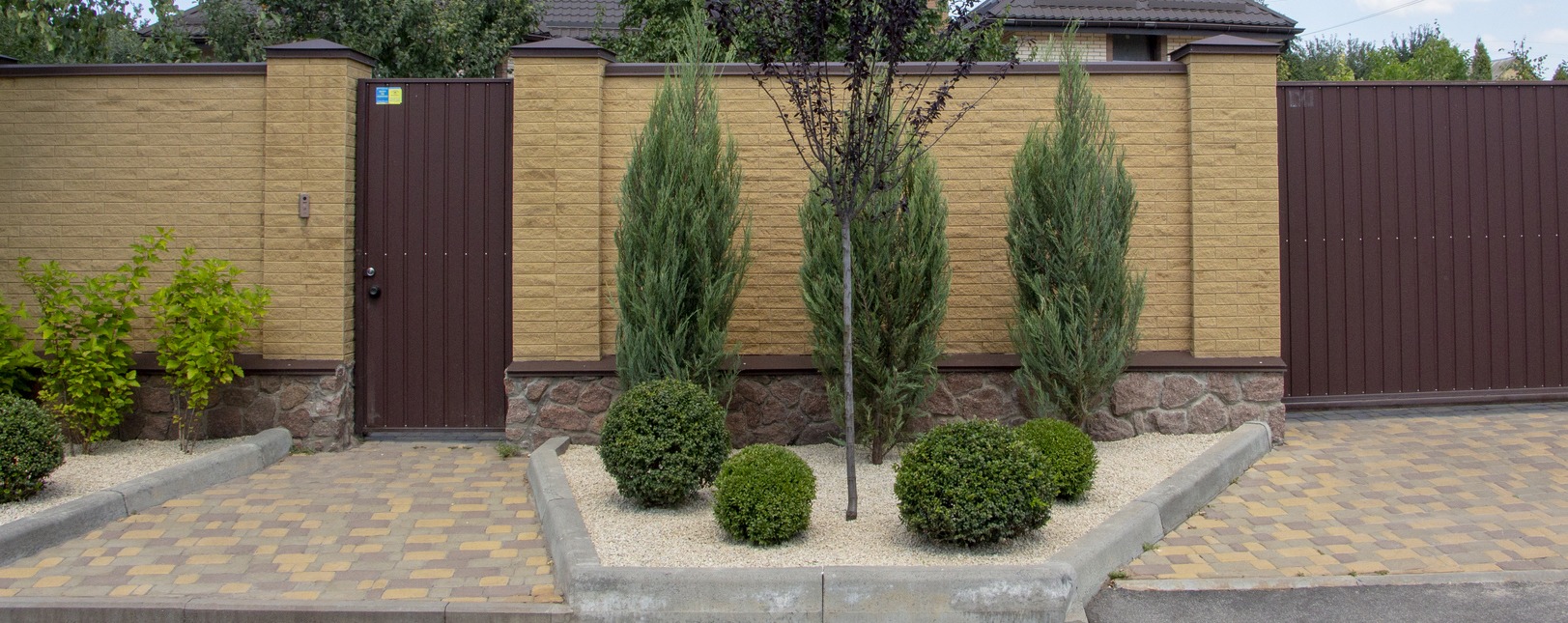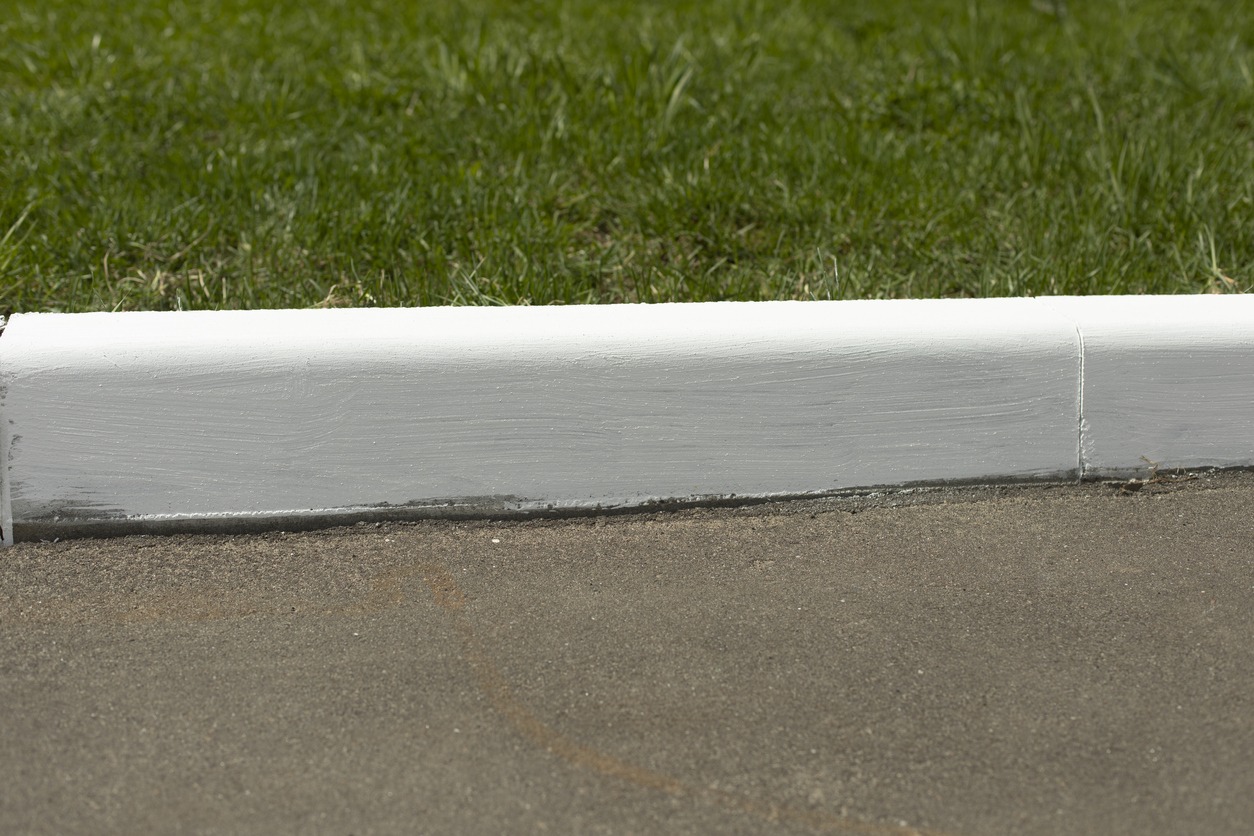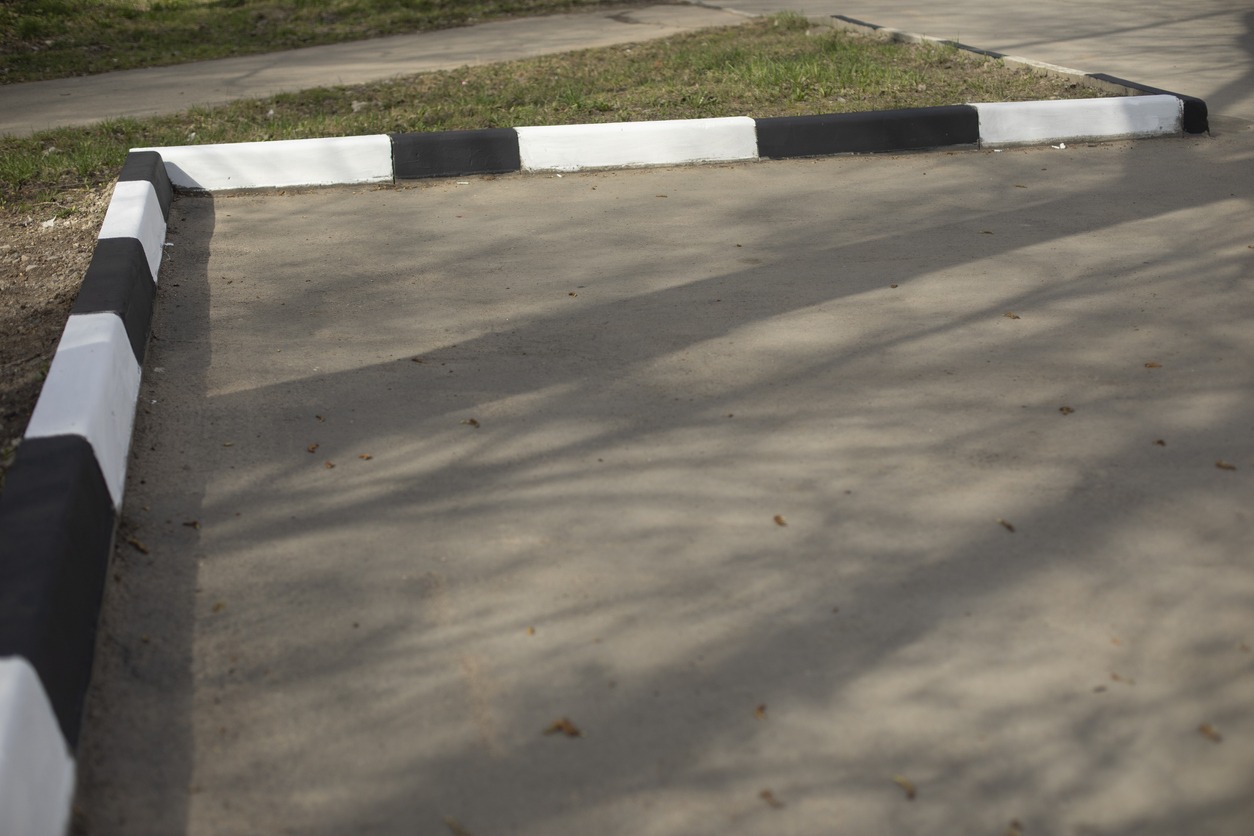Driveway edging transcends mere decorative appeal, emerging as a pivotal element in bolstering driveway longevity and structural resilience. It ingeniously mitigates edge cracking by evenly distributing vehicular weight and demarcates clear boundaries that uphold the driveway’s framework. Moreover, it plays a vital role in managing water runoff, thereby curtailing erosion beneath the driveway’s surface. Homeowners are presented with a spectrum of material choices, including concrete, brick, stone, and metal, each offering unique benefits in terms of durability and aesthetics. The selection of edging material is influenced by factors such as climate and anticipated maintenance needs, with each material responding differently to environmental stressors. Embracing regular upkeep practices like cleaning, sealing, and timely repairs further amplifies the effectiveness of driveway edging in preserving the driveway’s condition. This article delves into the nuances of driveway edging, guiding homeowners through the selection of materials and maintenance strategies that align with their specific environmental conditions and aesthetic preferences, ultimately ensuring the driveway’s endurance and functionality.
What is driveway edging?
Driveway edging is the strategic placement of a border along the sides of a driveway, crafted from a variety of materials such as concrete, brick, stone, or metal. Each material brings its own set of benefits, balancing both aesthetic appeal and practical functionality. The primary purposes of edging include enhancing the driveway’s visual attractiveness, clearly delineating its boundaries, bolstering its structural foundation, and efficiently managing water runoff. By effectively distributing the weight of vehicles and preventing the driveway edges from deteriorating, edging plays a pivotal role in extending the driveway’s durability and overall lifespan.
Innovative Edging Techniques and Examples:
- LED Lighting Integration: Incorporating LED lighting within or alongside the edging material not only highlights the driveway’s boundaries at night but also adds a modern aesthetic touch. This technique is becoming increasingly popular in contemporary home designs for its functionality and visual appeal.
- Permeable Edging: To combat water runoff issues, especially in wet climates, permeable edging materials like certain types of bricks and stones are being used. These materials allow water to seep through, reducing runoff and enhancing drainage around the driveway.
- Mixed Material Edging: Combining different materials, such as stone with metal accents, offers a unique and customizable look. This approach allows homeowners to match the edging with both the driveway’s and the home’s aesthetic, creating a cohesive landscape design.
- Raised Edging: For added structural benefits and visual depth, raised edging is being employed. This technique involves creating a slightly elevated border, which can help in better defining the driveway area and preventing soil from the garden areas spilling onto the driveway.
Real-World Examples:
- In a residential project in Portland, Oregon, a homeowner opted for LED-integrated stone edging to enhance visibility during the foggy months, showcasing how functionality and design can go hand in hand.
- A coastal home in Florida implemented permeable brick edging to manage frequent rainwater, demonstrating the practical application of innovative materials in challenging climates.
- A modern home in California utilized a mixed material edging approach, combining polished concrete with stainless steel strips, highlighting the versatility and customization options available in driveway edging.
Why is edging important for driveway durability?
Edging stands as a fundamental component in enhancing driveway durability for several key reasons. Firstly, it prevents edge cracking by effectively distributing the weight of vehicles across the driveway’s surface, thereby alleviating undue stress on its edges. This aspect is crucial for maintaining the driveway’s structural integrity over time.
Moreover, edging contributes to the structural integrity of the driveway by establishing clear boundaries. This definition not only aids in preserving the driveway’s intended shape but also prevents the shifting of materials, ensuring a stable and consistent foundation.
Another vital role of edging is its ability to control water runoff. By guiding water away from the driveway, it significantly reduces the risk of erosion beneath the surface, which can undermine the driveway’s foundation and lead to premature wear or damage.
Collectively, these benefits underscore the importance of edging in safeguarding the longevity and functionality of driveways, making it an indispensable element in driveway construction and maintenance.
Prevents edge cracking by distributing weight
Edging significantly enhances driveway durability by evenly distributing the weight of vehicles. This crucial function minimizes undue pressure on the driveway’s edges, effectively preventing edge cracking. Maintaining the surface’s integrity over time relies heavily on this aspect of weight distribution.
Supports structural integrity by defining boundaries
A key benefit of edging is its role in supporting the driveway’s structural integrity. By clearly defining the driveway’s boundaries, edging helps maintain its intended shape and prevents the shifting of materials. This stability is vital for ensuring a durable and long-lasting driveway surface.
Controls water runoff, reducing erosion under the driveway
In addition to supporting structural integrity, edging plays a critical role in controlling water runoff. It directs water away from the driveway, significantly reducing the risk of erosion beneath the surface. Protecting the driveway’s foundation from erosion is essential for preserving its condition and extending its overall lifespan.
What materials are commonly used for driveway edging?
A diverse array of materials is employed for driveway edging, each bringing its own set of advantages in terms of durability and aesthetic appeal. Concrete stands out for its versatility and strength, making it a favored choice among homeowners looking for a durable yet customizable edging option. Brick, with its classic look and decent durability, caters to those desiring a traditional aesthetic touch. Stone edging is prized for its high durability and natural appearance, offering an elegant blend with the outdoor environment. Lastly, metal introduces a modern aesthetic, varying in durability and fitting well with contemporary home designs. Choosing the right material hinges on balancing the homeowner’s aesthetic desires, durability needs, and readiness for maintenance.
Concrete: Popular for its versatility and strength
Concrete is widely celebrated for its versatility and strength, making it a preferred choice for driveway edging. Its ability to be molded into various shapes and tinted in different colors allows it to seamlessly match a broad spectrum of architectural styles, providing both durability and aesthetic flexibility.
Brick: Offers a classic look with decent durability
Brick edging delivers a timeless appeal with its classic look, accompanied by decent durability. This option is particularly appealing for those aiming to achieve a traditional or historic aesthetic in their landscape design, offering warmth and charm.
Stone: High durability with a natural aesthetic
Stone is renowned for its outstanding durability and natural beauty, making it an ideal choice for driveway edging. It effortlessly integrates with the natural surroundings, offering a sturdy and visually appealing border that enhances the overall landscape.
Metal: Provides a modern look, varies in durability
Metal edging brings a sleek, modern aesthetic to driveways, with a durability that can vary based on the metal type. It’s an excellent option for homeowners seeking to incorporate a contemporary or minimalist edge into their property’s exterior design.
How does material choice affect durability?
The selection of materials for driveway edging plays a pivotal role in determining its durability and longevity. Concrete, with its long-lasting nature and resilience against weathering, stands as a robust option suitable for various climates. In contrast, brick provides a timeless aesthetic but may be more susceptible to movement and cracking over time, potentially leading to increased maintenance efforts. Stone edging showcases exceptional durability, effectively withstanding most environmental stressors and ensuring a lasting boundary. Meanwhile, metal edging, depending on its type, might face challenges with rust, requiring more frequent maintenance to maintain its structural integrity and visual appeal. Thus, understanding the inherent properties of each material is essential for aligning driveway durability with homeowner expectations and environmental demands.
Concrete’s longevity and resistance to weathering
Concrete boasts exceptional longevity and a strong resistance to weathering, positioning it as a highly durable option for driveway edging. Its ability to endure a wide range of environmental conditions without significant deterioration contributes to the overall sustainability of the driveway.
Brick’s susceptibility to movement and cracking over time
Despite its appealing aesthetic, brick is notably susceptible to movement and cracking as time progresses. This characteristic may necessitate additional maintenance or repairs to maintain its visual appeal and structural integrity.
Stone’s resistance to most environmental stressors
Stone edging is celebrated for its robust resistance to environmental stressors, such as extreme temperature fluctuations and moisture. This remarkable durability renders stone an ideal choice for a long-lasting, maintenance-friendly driveway edge.
Metal’s potential for rust, requiring more maintenance
Metal edging introduces a sleek, contemporary look but carries a risk of rust, which can affect both its appearance and durability. To mitigate this, regular maintenance is required, making metal a more labor-intensive option compared to its counterparts.
What maintenance practices extend the life of edged driveways?
To ensure the longevity and durability of edged driveways, adopting certain maintenance practices is essential. Regular cleaning stands out as a crucial step, effectively preventing the growth of weeds and the accumulation of debris that could undermine the driveway’s structural integrity. The application of a sealant acts as a protective barrier, shielding the driveway material from adverse weathering effects and enhancing its resistance to environmental stressors. Moreover, the prompt repair of any damage is imperative to avoid the escalation of minor issues into significant, costly repairs. Collectively, these maintenance practices play a pivotal role in preserving both the functionality and aesthetic appeal of edged driveways over time.
Regular cleaning to prevent weed growth and debris accumulation
Engaging in regular cleaning is a pivotal maintenance practice for edged driveways. It effectively prevents the growth of weeds and accumulation of debris, both of which can undermine the driveway’s structural integrity and aesthetic appeal over time.
Sealant application to protect material from weathering
The application of a sealant acts as a crucial defensive layer, safeguarding the driveway material against adverse weathering. This step significantly enhances the driveway’s resilience to environmental stressors, contributing to its prolonged durability.
Prompt repair of damage to prevent worsening conditions
Promptly repairing any detected damage is essential for preserving the edged driveway’s overall condition. Early intervention halts minor issues from evolving into more significant, costly problems, ensuring the driveway maintains its functionality and visual attractiveness for extended periods.
How does climate impact edging material choice and maintenance needs?
Climate significantly influences the selection of edging materials and dictates the maintenance strategies required to preserve driveway integrity. In cold climates, the necessity for freeze-thaw resistant materials like concrete and stone becomes paramount, as these options are less prone to cracking from freezing temperatures. For hot climates, materials that can endure thermal expansion, such as stone and specific metals, are ideal to prevent degradation. Wet climates require a focus on drainage capabilities to avert water damage, making permeable materials like certain bricks and stones highly suitable. By aligning material properties with climatic demands, homeowners can ensure their driveway edging not only enhances curb appeal but also stands the test of time with minimal maintenance.
Cold climates necessitate freeze-thaw resistant materials
In regions subjected to cold temperatures, the selection of freeze-thaw resistant materials is imperative. These materials are essential to prevent the edging from cracking and sustaining damage due to the cyclical nature of freezing and thawing.
Concrete and stone are preferable in cold climates
For cold climates, concrete and stone stand out as preferable materials for driveway edging. Their inherent resistance to freezing temperatures ensures they remain durable and intact, making them excellent choices for maintaining driveway integrity.
Hot climates require materials that can withstand expansion
In hot climates, it’s crucial to choose materials that are capable of withstanding thermal expansion. This characteristic is vital to ensure the driveway edging does not degrade under the stress of high temperatures.
Stone and certain metals are suitable for hot climates
Stone and specific metals are particularly suited for use in hot climates due to their ability to tolerate the expansion caused by heat. These materials maintain their structural integrity and aesthetic quality, even in extreme temperatures.
Wet climates need materials and designs that facilitate drainage
For areas with high rainfall or moisture, selecting materials and implementing designs that enhance drainage is critical. Effective drainage systems prevent water accumulation and damage, thereby safeguarding the driveway’s edging.
Permeable materials like certain bricks and stones are ideal
In wet climates, permeable materials such as select bricks and stones prove to be ideal. Their permeability allows for efficient water drainage, protecting the driveway from erosion and water-induced deterioration.





